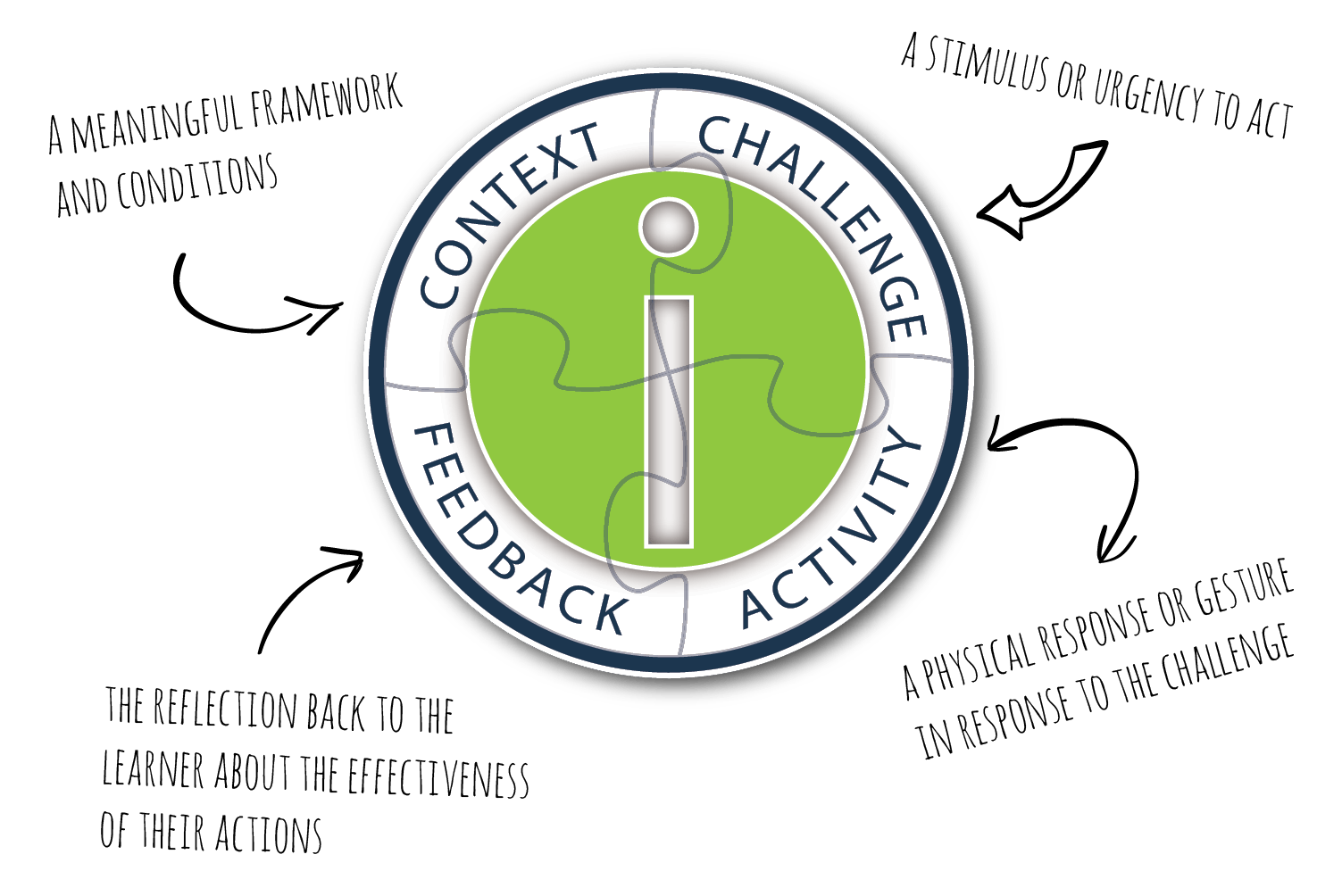Using The CCAF Model To Design Effective Interactions For eLearning
Although any type of learners’ interaction with the eLearning content is beneficial to learning, there is no doubt that an eLearning course designed from the very beginning to take into account learners active involvement with the eLearning content would yield much better learning outcomes. A very useful tool, eLearning professionals have at their disposal to design interactivities for eLearning, is the CCAF Model. The initials stand for Context, Challenge, Activity and Feedback and specify the actual factors instructional designers should take into consideration each time they design any type of learners’ interaction with the eLearning course. In this article, I’m going to examine each one of these factors separately, and I’ll give you some practical tips on how to integrate each one of the components of the CCAF Model into your instructional design.
Applying The CCAF Model: 1st C For Context
It is very easy for instructional designers to create eLearning interactivities asking learners to perform certain tasks, even to guide them throughout the entire learning process until they achieve a certain predefined behavior that guarantees that learning has taken place. That´s too technical. Science is good but reality is different. If it’s not always clear for learners why they are asked to perform certain tasks in a particular way, the learning outcome may not be the expected one.
The CCAF model proposes that, in order for learners to be able to establish a clear connection between what they theoretically learn and its practical application after course completion, all eLearning information should be given within context. This is particularly true for busy corporate learners who want to know exactly how the eLearning material presented is relevant to their jobs. Providing context is, therefore, another way to keep your corporate learners motivated throughout the eLearning course as it makes the value of eLearning content and the direct effect it may have on their job performance obvious to them. Here are some useful tips for an instructional design within context:
- Provide opportunities for meaningful learning applicable to real-life situations.
Today, all eLearning professionals agree that learning should be meaningful and this can only be the case if learners are able to understand the usefulness of every bit of information presented throughout the eLearning course and how this information is applicable into real life settings. This is what from an educational point of view we call knowledge transfer. - Establish an obvious connection between theory and practical application of the eLearning content.
To achieve this, include a variety of eLearning interactions, such as, context-related examples, case studies, simulations and branching scenarios. Give your employees the opportunity to solve problems that they may also encounter at work. Force them to make risk-free work-related decisions. Use branching what-if scenarios and case studies to show them the consequences of their choices. Make them perceive online training not as a waste of time but rather as a valuable investment that will help them improve their skills, and thus, will increase both their productivity and income.
Applying The CCAF Model: 2nd C For Challenge
The second component of the CCAF Model emphasizes the importance of learners’ active participation in the eLearning course. It simply states that all eLearning interactions should be challenging enough to involve learners, motivating them at the same time to get engaged in the learning process. How to make your eLearning course challenging? Here are some tips to follow:
- Create a sense of urgency.
Give learners a personal reason to complete the online training as soon as possible. Making learners do things that are meaningful to them and that they can also see their direct application in real-life settings is the key for effective adult learning. Therefore, challenges should always be linked to work performance goals and objectives. Successfully completing job-related challenges raises learners’ self-confidence and increases the chances they apply what they have learned at work, improving their work performance. - Use “distractors”
Don’t make it easy for them. It has been proven that active engagement has a positive effect on information retention rates. A good practice is not to make solutions to problems too obvious. Use what in instructional design we call “distractors”, that actually are common misconceptions or easily-confused alternative options, in order to challenge learners to consider various factors before making their final decision. - Make learners search for additional information on their own.
Give them stimuli to search for the information they need. Instead of simply memorizing the information presented, this will give them the opportunity to get involved in the learning process and to take an active role, rather than being passive recipients of information. It allows them to take responsibility for their own learning. Guide them throughout the process by giving them tips on where to look in order to find the information they need. Isn’t this actually the case in real life?
Applying The CCAF Model: A For Activities
eLearning Activities consist the third component of the CCAF Model. Here are some points eLearning professionals should take into consideration in order to design effective eLearning activities:
- All eLearning activities should be linked to challenges
From an instructional design perspective, all eLearning activities should be linked to challenges. As challenges define goals and objectives to be met throughout the eLearning course, instructional designers utilize activities as a means in order for the eLearning course objectives to be met. - Level of difficulty
In terms of level of difficulty, eLearning activities should neither be too easy nor too difficult for learners to complete. Being too easy, may lead corporate learners to underestimate the importance of the eLearning content, though being too difficult may lead them to give up and quit the eLearning course for good. Effective instructional designs usually include activities of various levels of difficulty. - Provide learners with opportunities to learn from their own mistakes
Challenge also involves letting corporate learners the degree of freedom they need to navigate and experiment within a risk-free environment and see the possible consequences of their alternative actions and decisions. This gives them the opportunity to learn from their own mistakes and enhances their decision-making and critical thinking skills with respect to predefined job-related tasks they need to complete. Such interaction types allow corporate learners to “learn by doing”.
Applying The CCAF Model: F For Feedback
Providing feedback had always been a key factor for effective learning. Constructive feedback that explains to learners why a particular answer is correct or incorrect, advices them on what they could do better, or gives them tips on where to search to find the correct answer, contributes to learners’ active involvement with the eLearning content, fact that not only leads to higher retention rates of the information presented, but also improves their decision making and problem solving skills. To effectively include constructive feedback into your eLearning course, consider the following:
- Don’t wait until the final assessment to provide feedback
Traditionally, feedback is given at the end the eLearning course, usually, through a final assessment that measures whether learners have mastered the eLearning objectives or not. Today, this is not enough for effective eLearning. Let your audience learn from its own mistakes. Every time learners interact with the eLearning course without receiving the appropriate feedback, there is a missing learning opportunity. Take advantage of learners’ interactions with the eLearning content and provide constructive feedback for each one of the eLearning interactivities they access throughout the online course. - Use ready-made templates
Today, all eLearning authoring tools, allow eLearning content developers to add feedback comments to any type of interactivities they create by filling in the respective fields of the ready-made templates they provide. Although it’s a bit time-consuming for instructional designers to add feedback comments for each option, undoubtedly, this is the best way to increase the effectiveness of the eLearning course.
This was a very brief introduction to the CCAF Model and how it can be employed by eLearning professionals in the instructional design of any learner-oriented eLearning course. It’s a model that provides practical guidance on instructional design as it defines the characteristics good eLearning interactions should have.
Reference:








